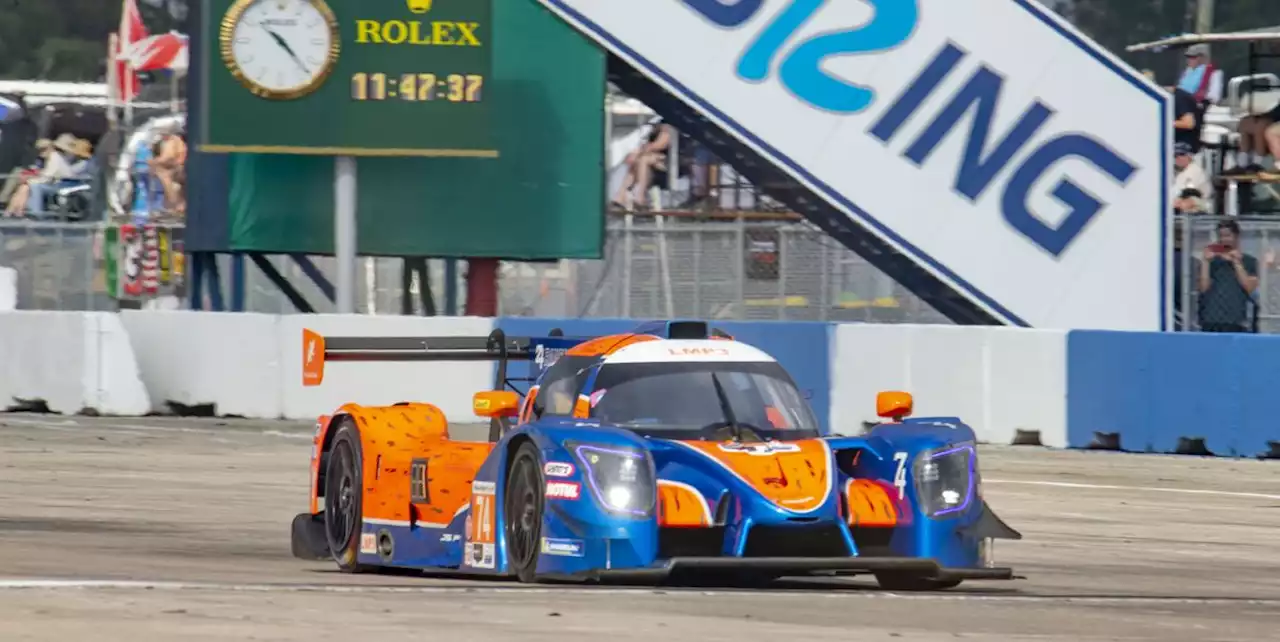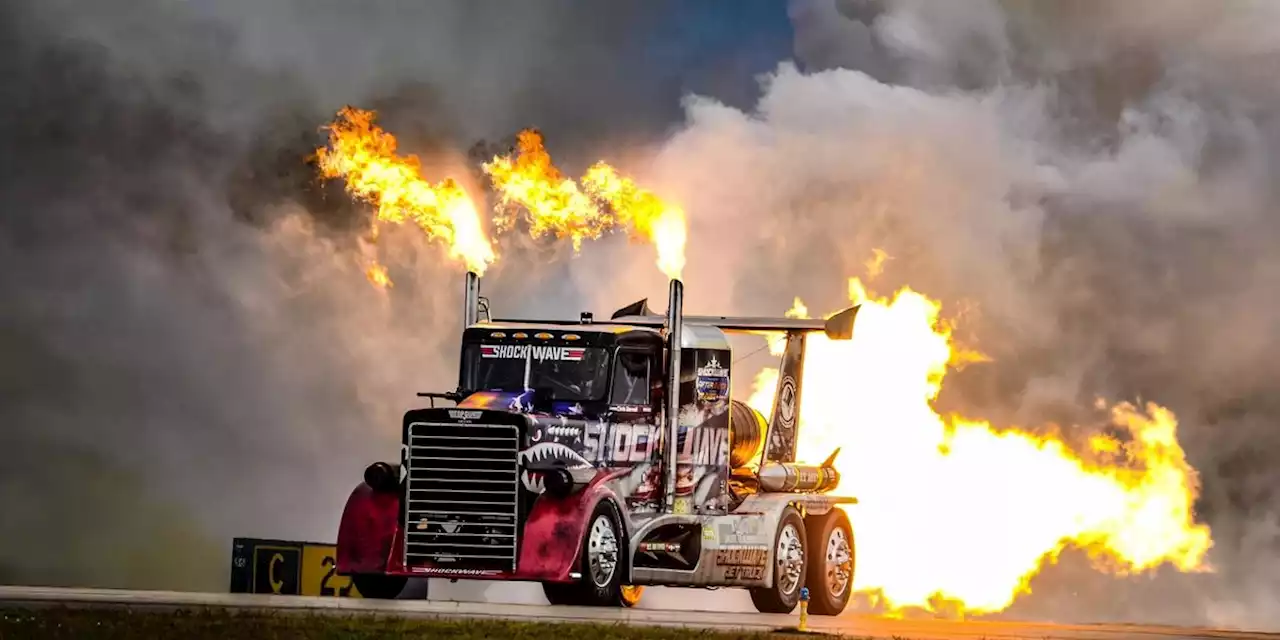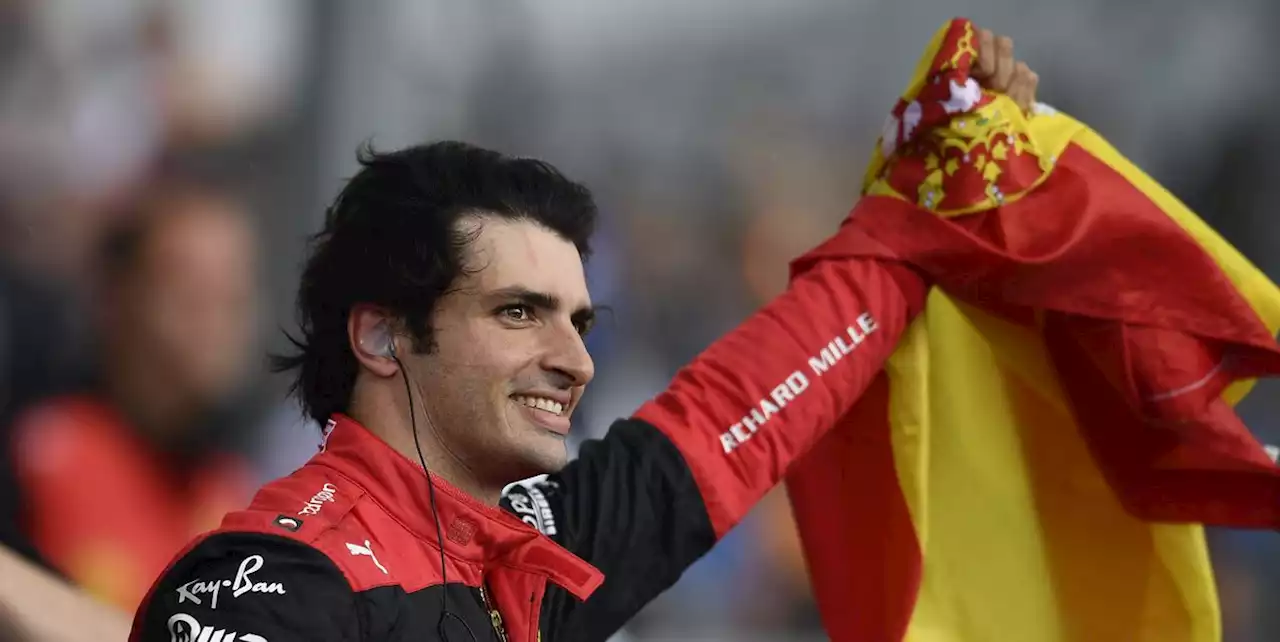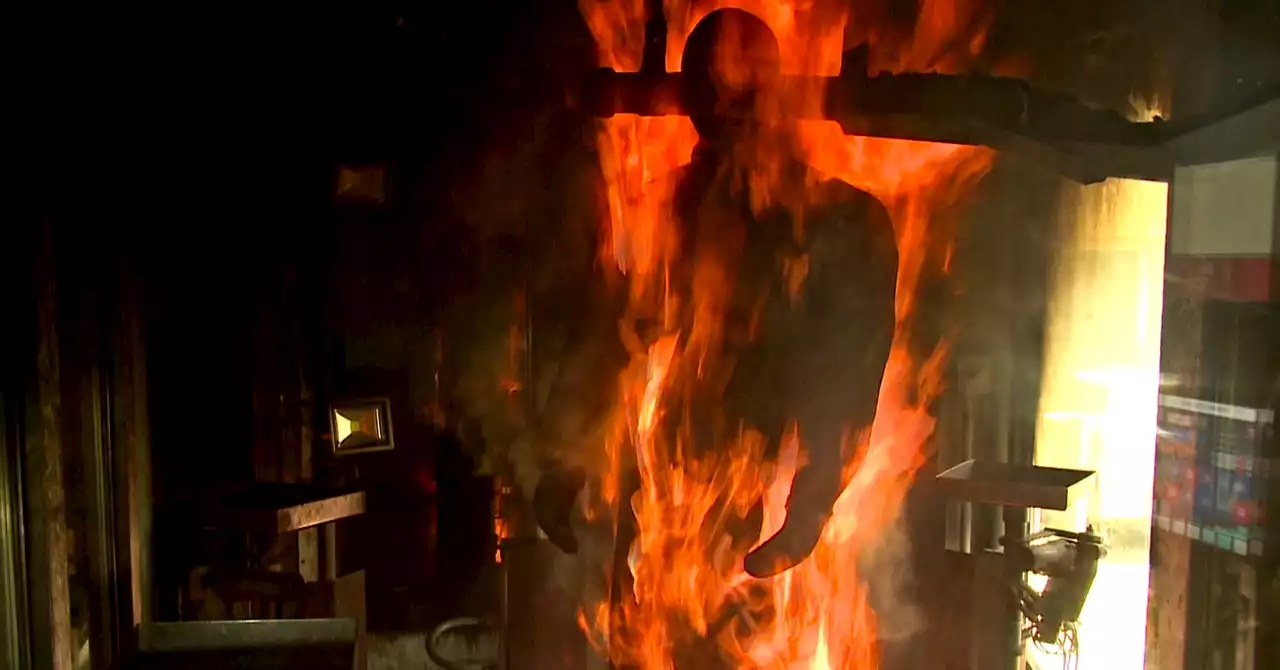'Watching Grosjean’s car smash into a wall that should have killed him, then seeing him climb out of a fire that should have burned him, is, indeed, a kind of miracle.' (From 2020)
started, as mayhem often does, with just the slightest nudge. Formula One cars leapt off the starting line of the Bahrain International Circuit, clustered together to gain early position in the cramped, frenzied, critical opening lap, swerving a sharp right around the first turn like a herd of hungry predators chasing panicked prey.
Barriers wrap the entirety of the racetrack in some form. But the one he collided against, unlike the barriers near some of the sharper turns and higher-risk areas, was just a bare, rippled ribbon of steel, similar to those along civilian highways. In less than a second, the steel ribbon shredded open. The barrier did its job, it stopped the car, but from the harrowing speed of 137 miles per hour, the car was stopped almost too quickly.
From his hospital room after the wreck, Grosjean credited his relative lack of injury to the recently implemented Halo device, a ring positioned above the driver compartment that is designed to absorb crash impact. It is a sturdy structure that looks like a circle above the driver’s “survival cell,” an area that is supposed to be most impervious to trauma. The Halo was certainly one factor; it kept Grosjean’s head from impacting the shredded roadside barrier.
This type of injury, called a basilar skull fracture, used to be shockingly common in racing, and it happened often in the decades of racing history before Earnhardt death. Since drivers need to be able to look around in order to be functional, restraint systems had focused on keeping the body inside the car, but they historically had ignored the head and neck.
Renault F1 driver Jarno Trulli wears the Head and Neck Support, which was made compulsory for the 2003 season.Hubbard’s HANS invention had slowly grown a voluntary fan base, but after Earnhardt’s accident, sales erupted and racing agencies made it mandatory. Since then, as of 2016, the most recent year for which data were found, not one single racing death from basilar skull fracture has occurred. Advanced biomedical engineering sometimes poses as magic.
So Stapp decided to answer the urgent safety questions using the most accurate technology he could think of: himself. Projects MX-981 and 7850 were born to find how quickly the human body could be slammed to a stop, and how to restrain it to minimize trauma. At the end of the track, the track dipped into a pond of water. This meant the sled would slam to a stop against a wall of liquid, smashing Stapp’s bones and organs against whatever contraption of webbing or straps was on the menu. His injuries were numerous. Broken ribs were common. He fractured his wrist, and at times the vasculature in his eyes would burst open, flooding parts of his eyeballs with blood and causing temporary blindness.
It is now estimated that seat belts save tens of thousands of lives every year in America alone and prevent untold numbers more from incurring life-altering, debilitating injuries. Stapp’s research was the impetus behind Ralph Nader’s more famous seat belt advocacy, and both men were in the room together when Lyndon B. Johnson signed the bill that mandated their factory installation.
Polyesters and most other synthetics are cheap to make, precisely because they are spun and whipped out of chemical chains that melt easily. They therefore happily reverse the process when exposed to flame, leading to a molten adhesive goo that adheres to skin and can melt through flesh while also being heartbreakingly difficult to scrape off during medical burn treatments. Natural fibers like cotton, even heavy denim, will ignite “like a candle,” engulfing the wearer in flames.
United States Latest News, United States Headlines
Similar News:You can also read news stories similar to this one that we have collected from other news sources.
 IMSA to Replace Prototype Challenge with New Sprint Racing Class in 2023VP Racing SportsCar Challenge will feature LMP3, GT4 cars in single-driver 45-minute sprint races.
IMSA to Replace Prototype Challenge with New Sprint Racing Class in 2023VP Racing SportsCar Challenge will feature LMP3, GT4 cars in single-driver 45-minute sprint races.
Read more »
 Stunt Driver Dies in Jet Truck Crash at Air ShowThe driver was racing a plane when a mechanical failure led to a high-speed accident.
Stunt Driver Dies in Jet Truck Crash at Air ShowThe driver was racing a plane when a mechanical failure led to a high-speed accident.
Read more »
 F1 British Grand Prix Wrap-Up: How Carlos Sainz Jr. Finally Scored His First VictoryFerrari driver ends 150-race winless streak in Formula 1.
F1 British Grand Prix Wrap-Up: How Carlos Sainz Jr. Finally Scored His First VictoryFerrari driver ends 150-race winless streak in Formula 1.
Read more »
